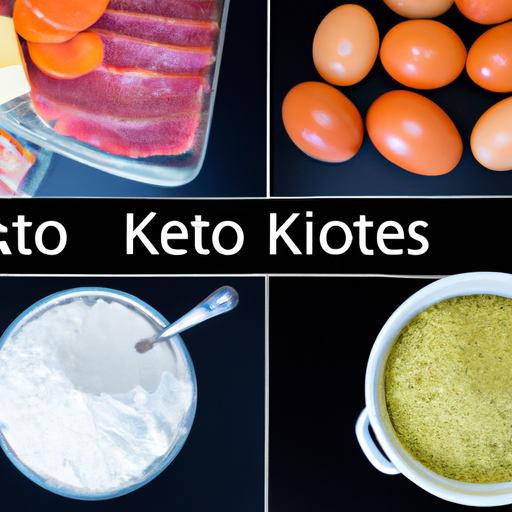Have you ever heard of ketosis and ketoacidosis but weren’t quite sure what the difference was? Well, you’re not alone! Many people confuse these two terms, but they actually have distinct meanings. In this article, we’ll explore the differences between ketosis and ketoacidosis, so you can have a better understanding of these terms and how they relate to your health.
If you’re curious to know more about the difference between ketosis and ketoacidosis, you’re in the right place. In the following paragraphs, we’ll dive deeper into each of these conditions, explaining what they are, how they occur, and what effects they have on the body. By the end of this article, you’ll have a clear understanding of the key distinctions between ketosis and ketoacidosis, and you’ll be able to differentiate between the two without any confusion. So, let’s get started and unravel the mysteries behind these often misunderstood terms.

Understanding Ketosis and Ketoacidosis
Ketosis and ketoacidosis are two terms that are often used interchangeably, but they have distinct differences. Both conditions involve the production of ketones in the body, but the underlying causes and consequences are markedly different. In this article, we will explore the definitions, causes, metabolic processes, nutritional approaches, symptoms and signs, metabolic consequences, diagnostic methods, treatment and prevention, as well as the risks and complications associated with ketosis and ketoacidosis.
Definition of Ketosis and Ketoacidosis
Ketosis refers to a metabolic state in which the body switches from primarily using glucose for energy to primarily using ketones. Ketones are molecules produced by the liver when glucose levels are low, typically as a result of a low-carbohydrate diet or fasting. In ketosis, the body utilizes fat stores as its primary fuel source, leading to weight loss and increased mental focus.
On the other hand, ketoacidosis is a serious medical condition characterized by excessively high levels of ketones in the blood, leading to the harmful acidification of the bloodstream. Ketoacidosis is primarily associated with uncontrolled diabetes mellitus, particularly type 1 diabetes, but it can also occur in individuals with type 2 diabetes, alcoholism, or prolonged starvation.
Are You a Ketosis Master? Take Our Quiz!
Causes and Triggers
Factors Leading to Ketosis
Ketosis is primarily triggered by a reduction in carbohydrate intake, typically to less than 50 grams per day. This low carbohydrate intake forces the body to rely on fat as its primary fuel source, leading to the breakdown of fatty acids into ketones. In addition to carbohydrate restriction, ketosis can also be induced by prolonged fasting or engaging in a high-intensity exercise regimen.
Factors Leading to Ketoacidosis
Unlike ketosis, which is a natural physiological response, ketoacidosis is typically caused by an underlying medical condition or imbalance. The primary trigger for ketoacidosis is uncontrolled diabetes mellitus, particularly type 1 diabetes, where a lack of insulin leads to elevated blood glucose levels and subsequent production of excessive ketones. Other factors that can contribute to ketoacidosis include illness, infection, alcohol abuse, certain medications, and adrenal gland disorders.
Metabolic Process
Ketosis and Metabolism
In ketosis, the metabolic process shifts from the utilization of glucose for energy to the utilization of ketones. When carbohydrates are restricted, the body’s glycogen stores become depleted, prompting the liver to convert fatty acids into ketones through a process known as ketogenesis. These ketones, namely acetoacetate, beta-hydroxybutyrate, and acetone, are then transported to various tissues to be used as an energy source.
Ketoacidosis and Metabolism
In ketoacidosis, the metabolic process is disrupted due to the lack of insulin or ineffectiveness of insulin present in the body. Without sufficient insulin, glucose cannot enter cells to be used as energy. As a result, the body begins to break down fats for energy, leading to the production of large amounts of ketones. The accumulation of ketones in the blood leads to an imbalance in the body’s pH levels, resulting in acidic blood and a potentially life-threatening condition.

Nutritional Approaches
Ketosis as a Result of Low Carb Diet
Ketosis can be achieved through a low carbohydrate diet, such as the popular ketogenic diet. This diet typically consists of high fat, moderate protein, and very low carbohydrate intake. By significantly reducing carbohydrate consumption, the body is prompted to enter a state of ketosis, where it burns fat for fuel instead of relying on glucose.
Ketoacidosis in Diabetes Mellitus
In contrast, ketoacidosis is not a desired result of any specific nutritional approach, but rather a complication of uncontrolled diabetes mellitus. People with diabetes are at risk of developing ketoacidosis when their blood sugar levels are consistently elevated due to a lack of insulin or the body’s inability to use insulin effectively. Maintaining tight glucose control is essential in preventing the onset of ketoacidosis in individuals with diabetes.
Symptoms and Signs
Indications of Ketosis
When the body enters a state of ketosis, there are several indications that can serve as signs. These include increased energy, elevated ketone levels in the blood and urine, reduced appetite, weight loss, mental clarity, and improved physical performance.
Symptoms of Ketoacidosis
Ketoacidosis, on the other hand, presents with a distinct set of symptoms that indicate a medical emergency. These symptoms include excessive thirst, frequent urination, dry mouth, fruity breath odor, nausea and vomiting, abdominal pain, fatigue, confusion, and in severe cases, loss of consciousness.
Metabolic Consequences
Advantages of Ketosis
Ketosis offers several benefits, both from a weight management and overall health perspective. By relying on fat as its primary fuel source, the body is able to break down and utilize stored fat more efficiently, resulting in weight loss. Additionally, ketosis has been associated with improved insulin sensitivity, reduced inflammation, enhanced mental focus, and increased energy levels.
Dangers of Ketoacidosis
In contrast, ketoacidosis poses significant risks to one’s health. The excessive accumulation of ketones in the blood can lead to a dangerous drop in blood pH, causing a condition called acidosis. This can result in electrolyte imbalances, dehydration, organ failure, and even death if left untreated.
Diagnostic Methods
Testing for Ketosis
The presence of ketosis can be determined through various testing methods. The most common approach is the use of urine test strips, which detect the presence of ketones in the urine. Blood tests that measure ketone levels, such as beta-hydroxybutyrate, can provide more accurate and reliable results. Additionally, breath analyzers that measure acetone levels in the breath can also be used to indicate the presence of ketosis.
Diagnosing Ketoacidosis
Diagnosing ketoacidosis requires a comprehensive evaluation of an individual’s medical history, physical examination, blood tests to measure glucose and ketone levels, as well as analysis of arterial blood gas (ABG) to assess the acid-base balance. These diagnostic methods help differentiate between ketosis and ketoacidosis and aid in the identification of underlying causes.
Treatment and Prevention
Managing Ketosis
Ketosis is generally a safe and natural metabolic state. However, it is important to manage and maintain ketosis properly to ensure optimal health and prevent potential complications. This includes consuming a well-formulated ketogenic diet, staying adequately hydrated, monitoring electrolyte levels, and seeking professional guidance if needed.
Treating Ketoacidosis
Ketoacidosis requires immediate medical attention and treatment. Treatment usually involves hospitalization, administration of intravenous fluids to restore hydration, administration of insulin to regulate blood glucose levels, correction of electrolyte imbalances, and close monitoring of vital signs. It is crucial to address the underlying cause of ketoacidosis to prevent future episodes.
Risks and Complications
Potential Risks of Ketosis
While ketosis itself is generally considered safe when managed properly, there are potential risks associated with this metabolic state. These risks may include nutrient deficiencies, electrolyte imbalances, gastrointestinal discomfort, and in rare cases, an increased risk of developing kidney stones.
Complications of Ketoacidosis
In contrast, ketoacidosis poses significant complications and can be potentially life-threatening if not promptly treated. Complications may include cerebral edema, cardiac arrhythmias, respiratory distress, kidney failure, and even death.
Conclusion
In conclusion, while ketosis and ketoacidosis are related concepts involving the production of ketones in the body, they have crucial differences in terms of causes, metabolic processes, nutritional approaches, symptoms and signs, metabolic consequences, diagnostic methods, treatment and prevention, as well as risks and complications. Ketosis is a natural metabolic state induced by a low carbohydrate diet, fasting, or exercise, while ketoacidosis is a serious medical condition primarily associated with uncontrolled diabetes mellitus. Understanding these differences is essential for managing one’s health effectively and making informed decisions regarding dietary choices and medical treatment.
